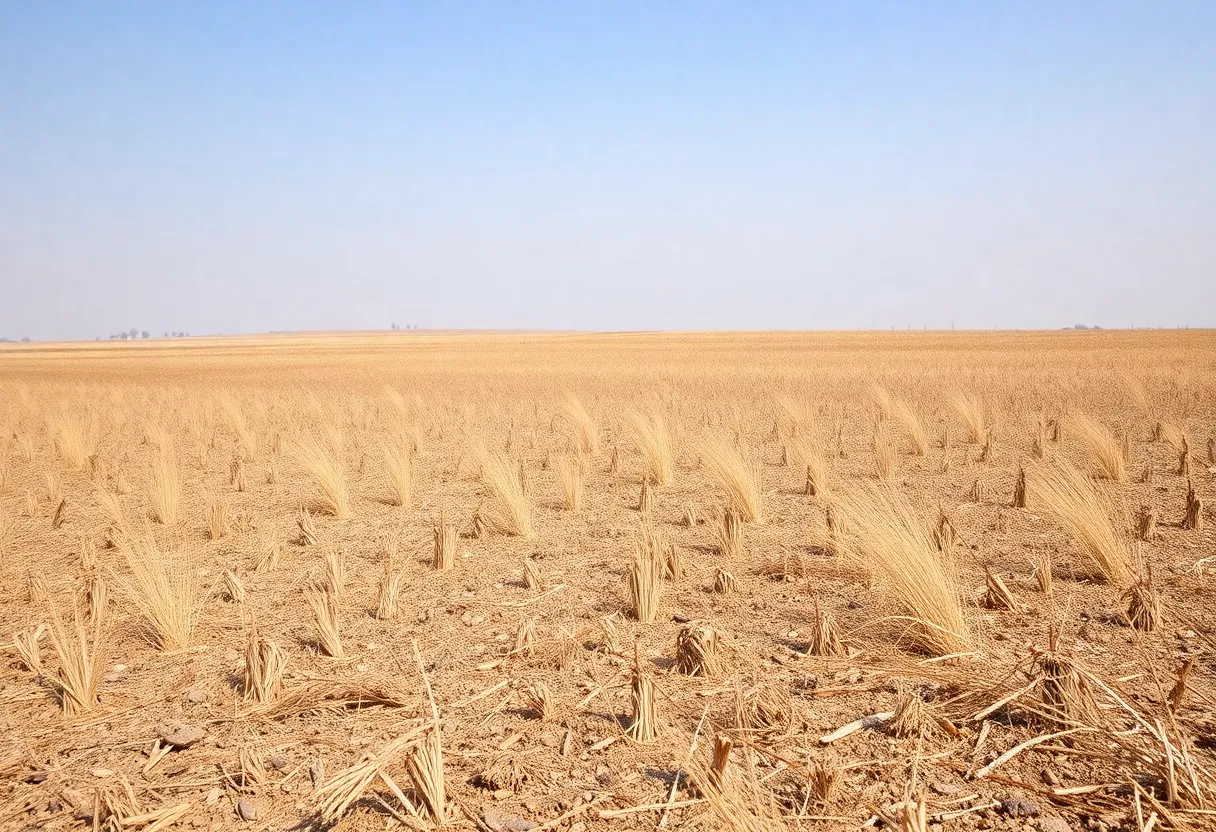Omaha, Nebraska, October 5, 2025
The National Weather Service has issued a high fire danger warning for Omaha-area dry fields, raising alarms over potential wildfires. With low humidity and gusty winds, officials encourage caution among residents, particularly in rural regions. Although no active fires have been reported, the combination of weather conditions makes the area particularly vulnerable to fires, emphasizing the need for preventative measures and community vigilance.
Fire Risk Escalates in Nebraska Fields
Omaha, NE (October 5, 2025) – The National Weather Service has issued a high fire danger warning for dry fields around Omaha, heightening concerns for potential wildfires in the region. With low humidity levels and gusty winds fueling the risk, officials are urging residents, especially in rural outskirts, to exercise extreme caution. No active fires have been reported as of Sunday, but the combination of weather conditions makes the area particularly vulnerable.
Understanding the Warning
The warning focuses on the Omaha-area dry fields, where parched vegetation and strong winds could rapidly spread any spark into a larger blaze. Fire danger ratings have spiked due to prolonged dry spells that have left grasses and crops brittle and highly flammable. The National Weather Service emphasized that these conditions persist across Nebraska’s eastern plains, including areas near Omaha, where urban expansion meets expansive farmlands.
Local authorities have highlighted the rural outskirts as prime concern zones. Here, agricultural fields dominate the landscape, and activities like farming equipment use or discarded cigarettes pose immediate threats. The advisory calls for immediate avoidance of any actions that could ignite a fire, prioritizing public safety in these vulnerable spots.
Safety Recommendations Issued
To mitigate risks, officials strongly advise against all outdoor burning, including controlled burns for debris or agricultural purposes. This prohibition aims to prevent accidental ignitions during the high-risk period. Additionally, residents are encouraged to report any sightings of smoke immediately to emergency services, allowing for swift response to potential threats.
Beyond burning restrictions, broader precautions include clearing dry brush around properties and ensuring vehicles are maintained to avoid exhaust-related sparks. Farmers and outdoor workers in the Omaha vicinity should monitor weather updates closely and postpone non-essential activities involving open flames or machinery until conditions improve.
Weather Factors Driving the Risk
Current forecasts indicate sustained low humidity, dropping below 30% in many areas, paired with winds gusting up to 25 miles per hour. These elements create an ideal scenario for fire spread, as dry air saps moisture from fuels like grass and leaves, while winds carry embers over long distances. Sunday’s outlook shows no immediate relief, with similar patterns expected through the early part of the week.
The National Weather Service’s alert underscores the urgency, noting that fire weather watches could extend if patterns hold. Historical data from Nebraska shows that such conditions have led to rapid fire growth in past seasons, particularly in fall when fields are harvested and left exposed.
Broader Context in Nebraska
Nebraska’s fire-prone landscape, characterized by vast open fields and variable weather, has seen increasing wildfire incidents in recent years. Climate trends contribute to longer dry periods, exacerbating risks in agricultural heartlands like those surrounding Omaha. The state’s emergency management teams are on heightened alert, coordinating with local fire departments to prepare resources.
While Omaha itself benefits from urban fire suppression capabilities, the rural-urban interface remains a challenge. Past events, such as field fires sparked by equipment malfunctions, have demonstrated how quickly blazes can jump property lines. Education campaigns in the region stress community vigilance, with annual reminders about fire safety during peak seasons.
Residents are advised to stay informed through official channels for updates on the warning’s status. As conditions evolve, lifting the advisory will depend on rising humidity and calmer winds. In the meantime, collective caution can prevent what could otherwise become a significant incident. The focus remains on proactive measures to protect lives, property, and the vital farmlands that define Nebraska’s economy.
This situation serves as a reminder of the delicate balance between weather and human activity in fire-sensitive areas. By heeding the guidelines, the community can navigate this period safely, ensuring the Omaha area’s fields remain productive rather than perilous.
(Word count: 612)
FAQ
What is the current fire danger situation in Omaha?
The National Weather Service issued a high fire danger warning for Omaha-area dry fields on Sunday, with low humidity and gusty winds increasing wildfire risks, especially in rural outskirts.
What specific areas are affected?
The warning targets dry fields around Omaha, particularly in rural outskirts where dry vegetation heightens the chance of rapid fire spread.
Are there any active fires reported?
No active fires have been reported yet, but caution is key due to the elevated risks from weather conditions.
What precautions are officials recommending?
Officials advise against outdoor burning and urge reporting of any smoke to prevent potential wildfires.
How long will these conditions last?
The high fire danger stems from ongoing low humidity and gusty winds, with no immediate improvement forecasted, though updates will follow weather changes.
Key Fire Risk Factors Chart
The following table outlines the key features contributing to the elevated fire risk in Omaha-area fields based on the current warning.
| Factor | Description | Impact |
|---|---|---|
| Low Humidity | Below 30% in many areas | Dries out vegetation, making it highly flammable |
| Gusty Winds | Up to 25 mph | Can rapidly spread flames and embers over distances |
| Dry Fields | Omaha-area rural outskirts | Parched grasses and crops act as fuel for wildfires |
| No Active Fires | As of October 5, 2025 | Allows for preventive measures, but vigilance required |
| Precautions | Avoid outdoor burning, report smoke | Reduces ignition sources and enables quick response |
Deeper Dive: News & Info About This Topic
HERE Resources
North Omaha Faces Major Gas Leak Evacuation





